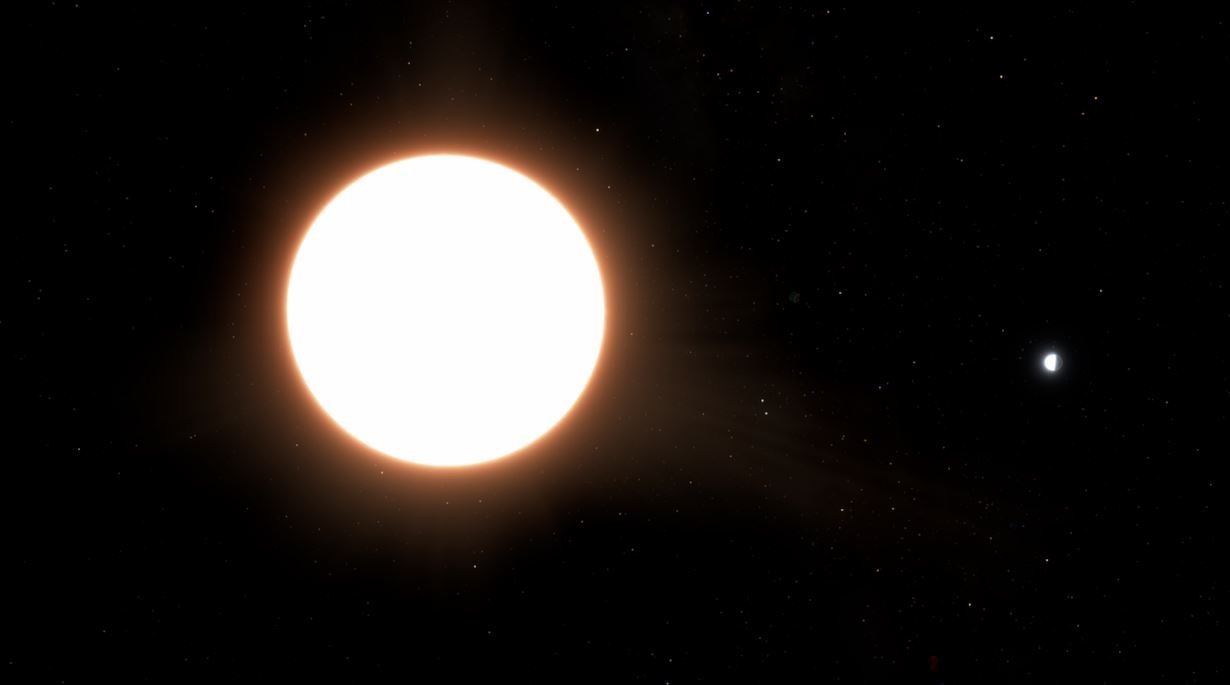A team of scientists from the European Space Agency (ESA) states in a study published in the scientific journal Astronomy & Astrophysics: Discovered an exoplanet the size of Neptune and was considered the brightest ever found in space. The discovery is part of the ExOPlanet Satellite Identification (Cheops) Space Telescope’s mission to study alien worlds with high-precision observations.
Cheops is considered the first space mission applied to the study of bright and not-so-distant stars capable of hosting exoplanets. During the observations, the telescope captured a beautiful image of the brightest known exoplanet in the universe – surpassing the bright record for Venus, which reflects about 75% of sunlight.
It is named after the LTT9779b, The exoplanet reflects about 80% of its host star’s light and is considered the largest ‘mirror’ in the universe as it is exactly the size of Neptune. – the term mirror is used due to its high ability to reflect light.
The planet has metal clouds raining titanium droplets, and temperatures of up to 2,000 degrees Celsius have been recorded on the side closest to the star, the researchers say. The problem is, it couldn’t form a cloud in such a hot environment.
For Vivien Parmentier, researcher at the Côte d’Azur Observatory (France) and co-author of the study, it was like solving a puzzle. It was only when scientists began to consider the formation of these clouds, compared to the condensation that forms in the bathroom after a hot shower, that they were able to “place the pieces correctly”.
“To steam a bath, you can cool the air until the water vapor condenses, or you can keep the hot water on until clouds form, because the air is so saturated with steam that it can no longer hold it. Likewise, LTT9779 b can form metallic clouds even though it is very hot because the atmosphere is supersaturated with silicate and metallic vapors.”
The brightest exoplanet in space
According to the research, LTT9779 has a radius of 4.7 times that of Earth and orbits its star in just 19 hours. Generally, planets orbiting their star for less than 24 hours are gaseous planets, so the observation is very interesting. Scientists claim that no other planet of the same size and mass orbits this close to its star..
According to Sergio Hoyer, another co-author of the study and at the Astrophysics Laboratory in Marseille (Spain), the exoplanet lives in what’s known as the Hot Neptune Desert, and it’s metal clouds that help it ‘survive’.
“Clouds reflect light and keep the planet from overheating and evaporating. Meanwhile, being highly metallic weighs the planet and its atmosphere, making it harder to explode,” says Hoyer.
Follow the latest news in astronomy on TecMundo.
Source: Tec Mundo
I’m Blaine Morgan, an experienced journalist and writer with over 8 years of experience in the tech industry. My expertise lies in writing about technology news and trends, covering everything from cutting-edge gadgets to emerging software developments. I’ve written for several leading publications including Gadget Onus where I am an author.













